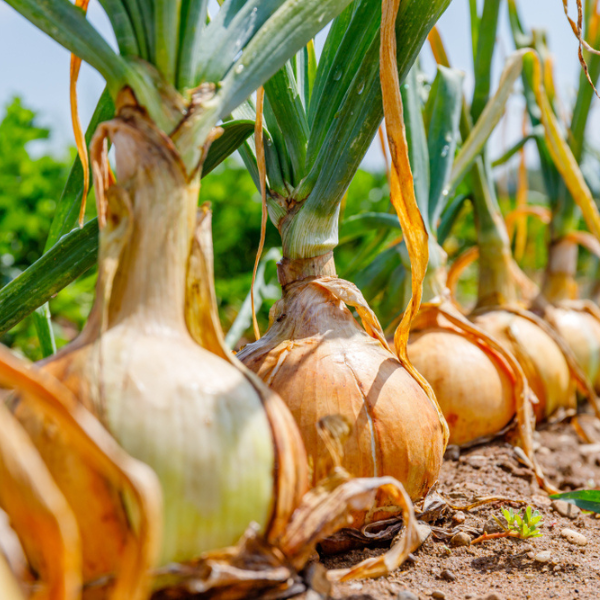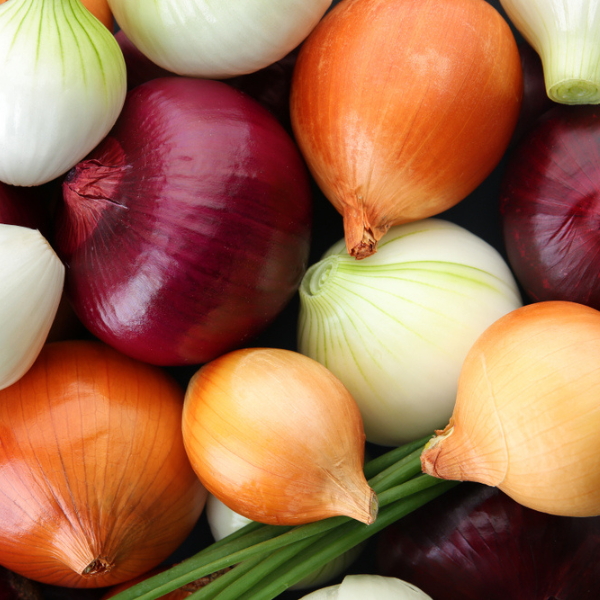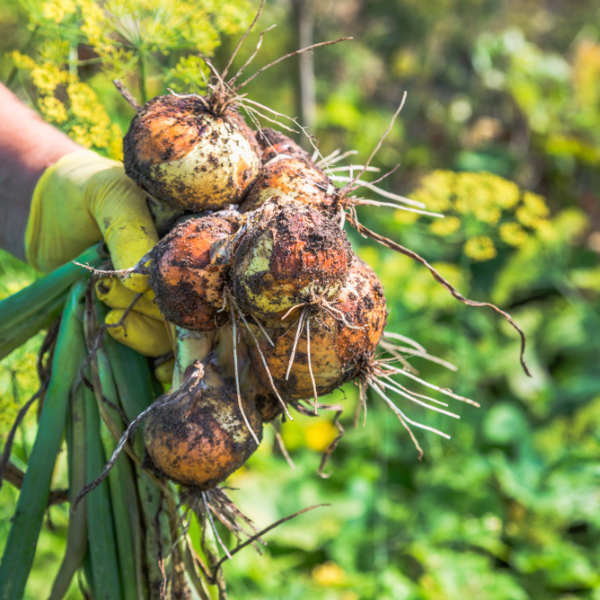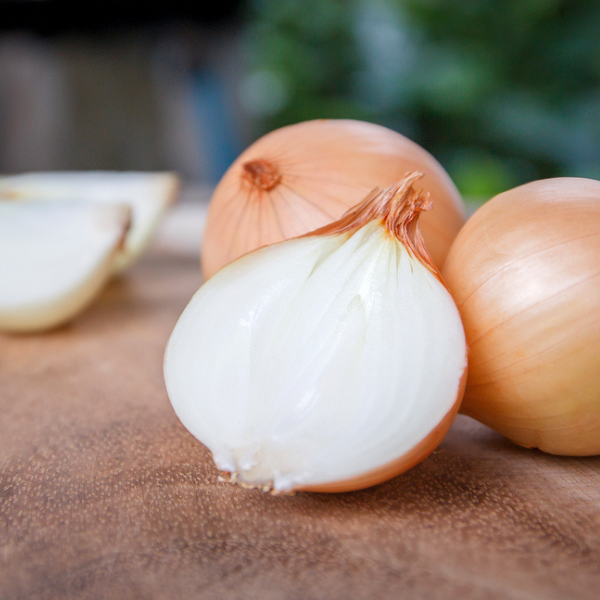Growing onions is much simpler than one might expect. They are harvested beginning in the middle of summer and continuing into the fall after being planted early in the spring. Regardless as to whether you start yours from seed or from sets, there really are a few tips and tricks of the trade that can make the difference between a successful harvest and a poor harvest. Find out how to plant, nurture, and eventually harvest onions. It should come as no surprise that someone who maintains a home garden would have an interest in cultivating this crop.
Growing Conditions For Onions
Pick an area with loose soil that is sunny. Bulbs cannot grow in soil that is compacted or rocky. Additionally, stay away from growing where the other Allium species were recently. The soil can harbor plant-eating insects and illnesses. When you don't have ideal garden conditions, you can also grow plants in containers. Onions have a medium growth rate and are best planted in the spring.
Seeds, transplants (seedlings that have just sprouted), or sets can all be used to plant them. Be careful where you plant onions because they are hazardous to pets owing to their chemical composition. Onions thrive in soil with a pH between 6.0 and 6.8 and need lots of sun and excellent drainage to develop.
Onions require a constant supply of water to develop unhindered since their roots are not very deep and ineffective at absorbing moisture. Although they actually thrive in drought conditions and resume growth when wet, it is best to maintain the soil's moisture level steadily until the bulbs enlarge.
You can mulch with a thin layer of grass clippings that have not been treated with herbicides or weed killers. It's preferable to let the tops of the bulbs bathe in dry sun because onions will automatically rise toward the surface as they create bulbs. Mulch that can keep the developing bulbs too wet should be removed.

How To Grow Onions
Once the ground has thawed and the weather has stabilized at or above 28 degrees Fahrenheit, you can start planting onion sets in the spring. In most cases, onion seeds are begun indoors roughly six weeks before they are transplanted into soil that has reached a temperature of approximately 50 degrees Fahrenheit outside.
In the event that you are beginning with seedlings, wait until the soil temperature has reached approximately 50 degrees Fahrenheit before planting them outside. Additionally, planting in the fall is an option in locations that are warmer. The onions will enter a dormant state over the wintertime and resume their growth once the weather warms up again in the spring.
Pick a location that gets plenty of sunlight and has sandy soil. The growth of bulbs will be stunted if the soil is rocky or compacted. Furthermore, you should avoid planting in areas that have been occupied by other species of Allium in the recent past. There is a possibility that plant-killing insects and illnesses will persist in the soil. When you don't have the right conditions for a garden, another choice is to cultivate plants in containers.
When planting onions, press them down into the earth until only the very tip of the set is exposed. Place each set at a distance of approximately four inches apart, and leave 12 to 18 inches between rows. Once the sets have been planted in the ground, you should not build up the soil around them or do anything else to disturb them. At all times, the sets are designed to appear to be emerging from the ground.
Plant the seeds little more than a quarter of an inch deep. Also, space seedlings in rows that are twelve to eighteen inches apart and at a distance of approximately 4 inches away from one another. In most cases, there won't be a requirement for a support structure.

Onion Care & Maintenance
To develop to their maximum potential, onions require a minimum of six hours of daily exposure to direct sunlight. When it comes to onions, having more exposure to sunlight is preferable. When it comes to properly cultivating onions, having good soil is the most important factor.
It is essential that the soil be exceptionally well-drained, perhaps even sandy, and that it contain a significant amount of organic matter. In addition, the ideal pH range for soil is between between neutral and slightly acidic. In order for onions to maintain the swelling of their bulbs, they need consistent access to water.
They need an inch and a half of water every week. However, make sure not to overwater the bulbs or let them remain in soil that is too wet, since this might cause the bulbs to rot. A little covering of mulch can be beneficial in terms of preventing water loss from the soil.
To ensure proper germination, onion seeds require conditions of at least Forty degrees Fahrenheit. Onions thrive in temperatures ranging from 68 - 77 degrees Fahrenheit, which is the ideal range for their growth. As long as the requirements for the soil's moisture are met, humidity is often not an issue. Onions are considered to be rather heavy feeders.
Applying a fertilizer strong in nitrogen to them once every few weeks will encourage leaf growth, which in turn will result in the production of large bulbs. Follow the instructions on the product label for the amount that should be used. Once the soil starts to split around the area where the bulb is formed, the foliage development cycle is complete, and there is no need for any additional applications of fertilizer.
The majority of gardeners pick their onions before the blossom stalks appear because they grow them as annuals. Pollination of onion blossoms can be accomplished by a variety of insects, including bees, as well as by the wind.

Harvesting & Storing Onions
If you wish to use young onions as "spring onions" or scallions, you can harvest them just a couple weeks after planting. There is no ideal size; simply pull them when they are large enough for you. Allow onions mature and develop for full-sized bulbs.
When the tops turn yellow and start to fall over, the bulbs are mature and ready to be harvested. With the tops still on, lift them up, brush off the dirt, and then spread them out to cure. You may do this somewhere that is warm and open; as long as it doesn't rain, you can even throw them over a fence. Bulbs require
constant airflow and dryness. As the onions age, the necks above the bulbs gradually dry up and the roots shrivel. This natural process will help to seal the top of the bulb, reducing the likelihood that the onions may rot. After 7 to 10 days, use pruning shears to cut the onion's tops and roots off.
Next, remove as much dried dirt as you can without removing the onion's papery outer skins. Finally, keep the onions in a cool location. Wrapped newspapers or paper towels and kept in the refrigerator are very sweet, juicy onions. Depending on the kind and if they were grown from seeds or sets, the maturation period for the bulbs varies.

However, onions can be harvested at any time; green onions can even be made from seedlings that have been pruned from a row. When around half of the leaves have fallen off and the skin of the onion bulb feels papery, the bulb is fully developed. Bulbs will keep longer if left in the ground until at least 50% of the greenish tops have collapsed.
When the weather is dry, harvesting is optimal. As soon as you notice that half of the leaves have fallen, gently encourage the remaining leaves to do the same without tearing them away from the bulb. After that, let the bulb cure for a few days while it is buried in the ground. Next, instead of plucking the bulb, dig it up. Just enough digging will be required to free up the remaining roots. Trim the leaves to one to two inches from the bulb and remove any loose soil.
Trim the roots as well. Freshly harvested onions can be used whenever you like, and after cutting them, they can be kept in the refrigerator. Set the onions outdoors in a warm, dry location for a couple days to cure before storing the remainder of your produce. They should then be hung in some kind of a mesh bag in a cold, dry area with sufficient airflow.
The ideal temperature range is between 40 and 60 degrees Fahrenheit. However, avoid keeping them in a fridge because the air there is too moist. Regularly check for rot indicators, and get rid of the offender before it affects the other onions.

